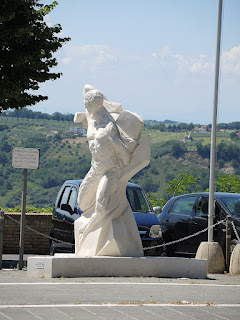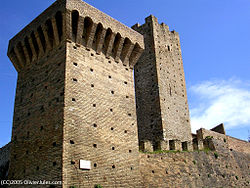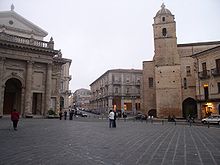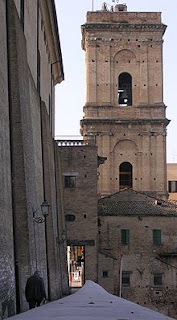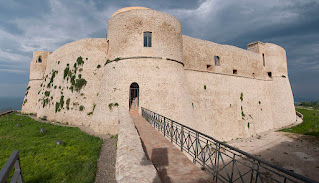16th century singer who helped create opera genre
The singer and composer Giulio Caccini, who was a key figure in the advance of Baroque style in music and wrote musical dramas that would now be recognised as opera, was born on this day in 1551. The father of the composer Francesca Caccini and the singer Settimia Caccini, he served for some years at the court of the Medici family in Florence, by whom he was also employed, as a somewhat unusual sideline, as a spy. Caccini wrote the music for three operas and published two collections of songs and madrigals. His songs for solo voice accompanied by one musical instrument gained him particular fame and he is remembered now for one particular song, a madrigal entitled Amarilli, mia bella, which is often sung by voice students. Caccini is thought to have been born in Tivoli, just outside Rome, the son of a carpenter, Michelangelo Caccini, from Montopoli, near Pisa. His younger brother, Giovanni, became a sculptor and architect in Florence. He developed his voice as a boy soprano in the prestigious Cappella Giulia at St. Peter’s basilica in Rome, studying under maestro di cappella Giovanni Animuccia. Read more…
_____________________________________
Vincenzo Peruggia – art thief
Gallery worker who stole the Mona Lisa
Vincenzo Peruggia, a handyman who earned notoriety when he pulled off the most famous art theft in history, was born on this day in 1881 in Dumenza in Lombardy, a village on the Swiss border. Peruggia stole Leonardo da Vinci’s Mona Lisa from the Louvre in Paris and evaded detection for more than two years, even though he was questioned by police over the painting’s disappearance. It was only when he attempted to sell the iconic painting - thought to be of Lisa del Giocondo, the wife of a cloth and silk merchant - to an art dealer in Florence that he was arrested. Experts accept that, although the Mona Lisa - sometimes known in Italy as La Gioconda - was a notable work, it is open to debate whether it was the best of all the magnificent pieces created by the Tuscan Renaissance genius, whose other masterpieces included The Last Supper and The Virgin of the Rocks and other outstanding portraits, such as The Lady with an Ermine. Yet it is without question the most famous painting in the world and enjoys that status largely because of Peruggia’s audacious crime. The theft took place on August 21, 1911, a Monday morning, when Peruggia removed the painting from the wall of the Salon Carré in the Musée du Louvre on the Right Bank of the Seine. Read more…
______________________________________
Antonio Cabrini - World Cup winner
Star of 1982 part of formidable Juventus team
World Cup winner and former Juventus defender Antonio Cabrini was born on this day in 1957 in Cremona. Cabrini, who was coach of the Italy women’s football team for five years until 2017, took his first steps in professional football with his local team, Cremonese, and moved from there to Atalanta of Bergamo, but it was with the Turin club Juventus that he made his mark, forming part of a formidable defence that included goalkeeper Dino Zoff plus the centre-back Claudio Gentile and the sweeper Gaetano Scirea. During Cabrini's 13 seasons in Turin, the Bianconeri won the Serie A title six times, as well as the 1985 European Cup, plus the Coppa Italia twice, the UEFA Cup and the European Super Cup, and the Intercontinental Cup. Milan's Paolo Maldini tends to be recognised as the greatest defensive player produced by Italy but Cabrini's abilities put him only just behind. Known by his fans as Bell'Antonio for his good looks and the elegance of his football, Cabrini's game possessed all the qualities required of a left-back. His positional sense and speed of thought served him well in defensive duties and he was also exceptional going forward. Read more…
.png)

.jpg)



.jpg)



.jpg)
